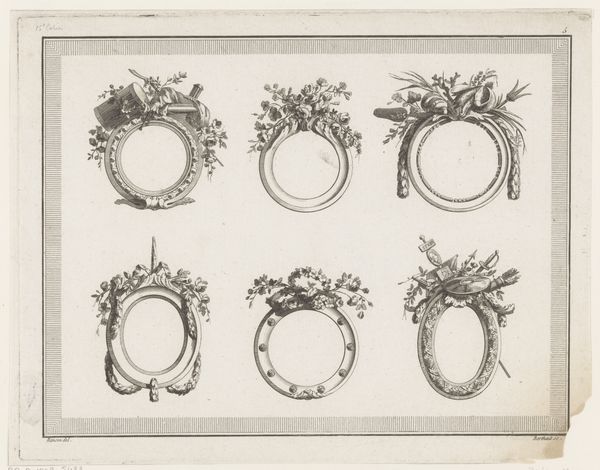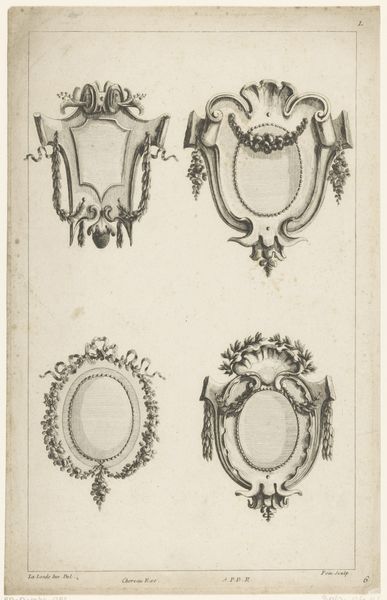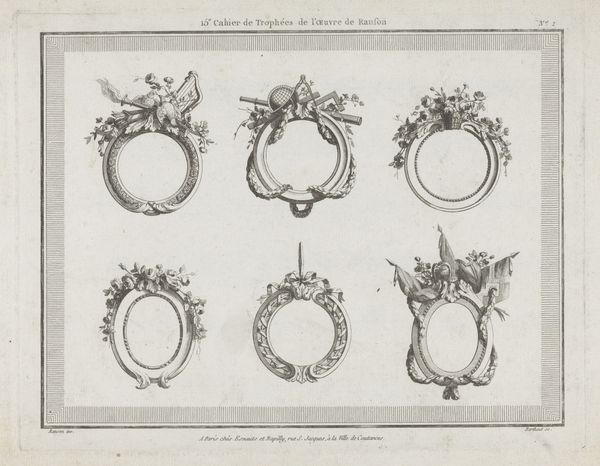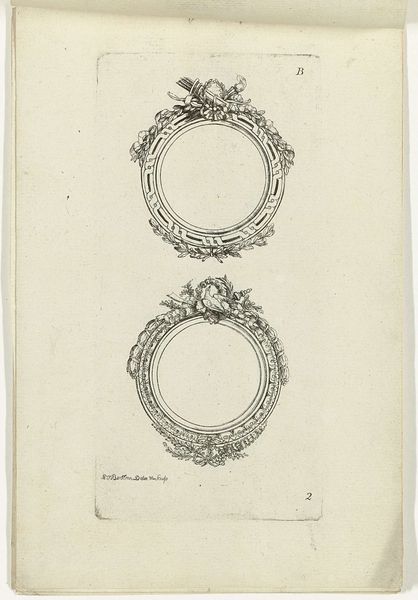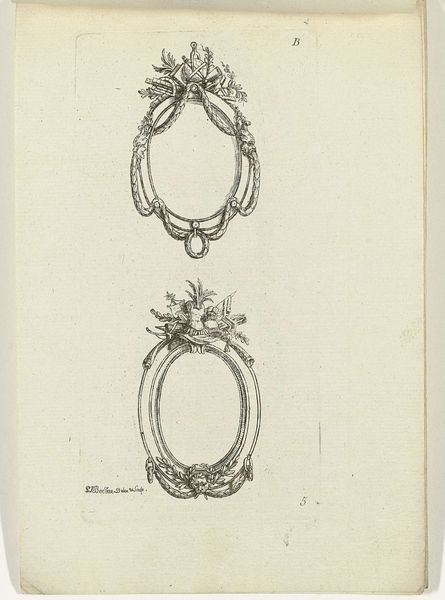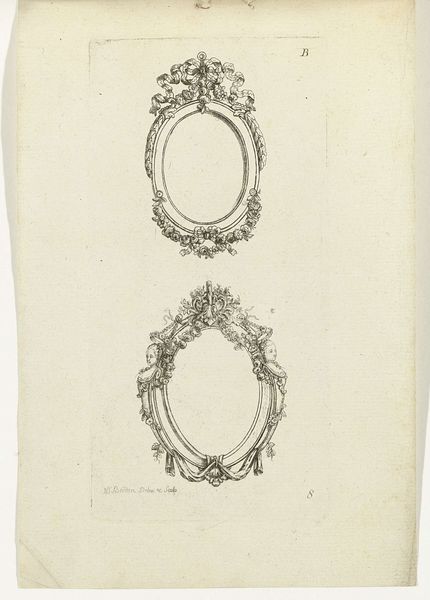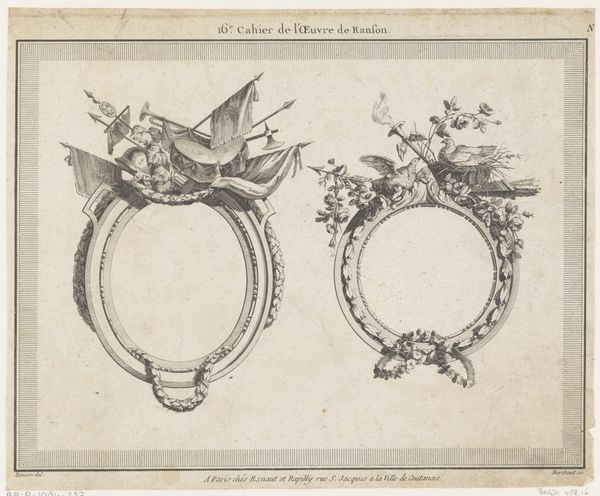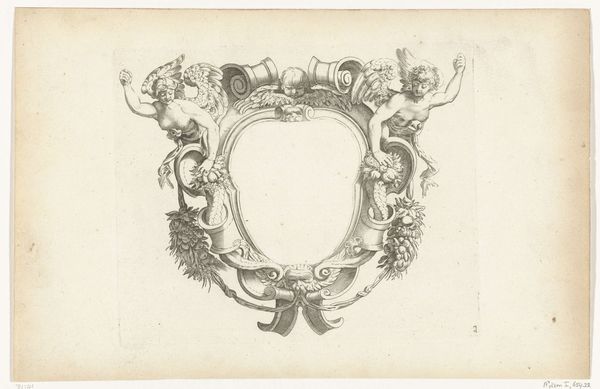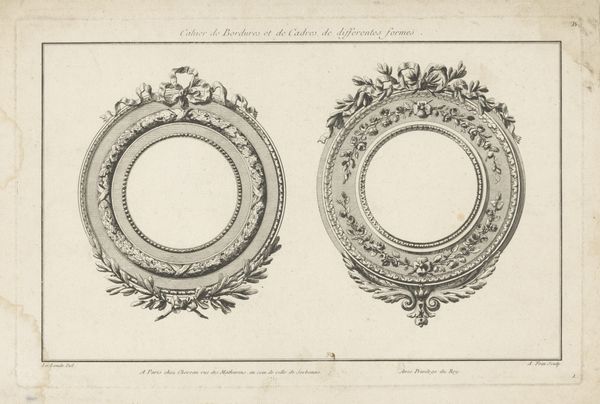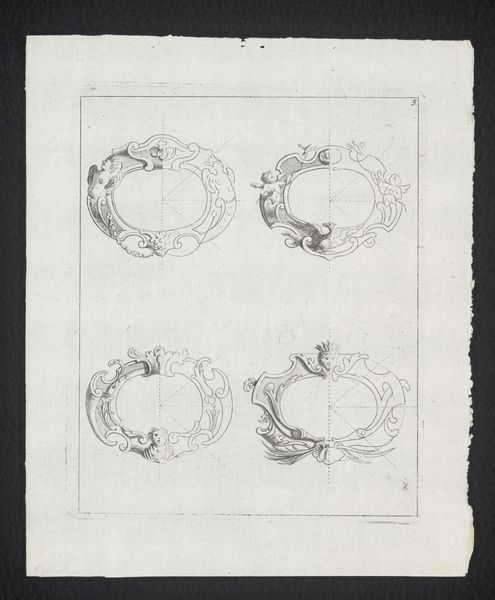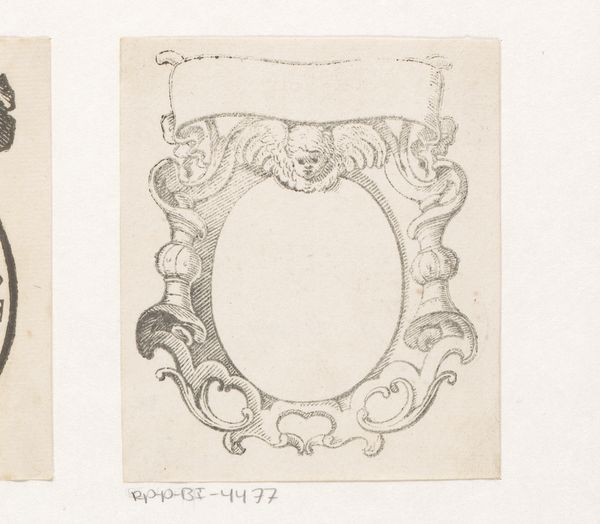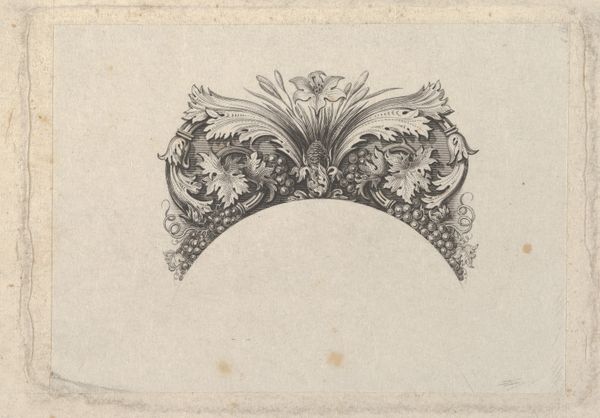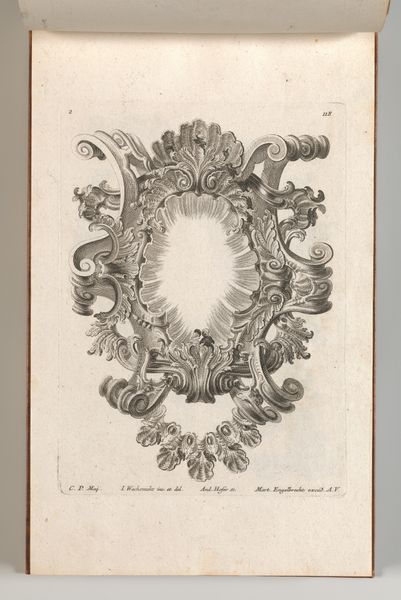
print, engraving
#
neoclacissism
#
weapon
# print
#
book
#
decorative-art
#
engraving
Dimensions: height 224 mm, width 288 mm
Copyright: Rijks Museum: Open Domain
Curator: This print, created by Pierre Gabriel Berthault in 1778, is titled "Medaillons met weegschaal, wapens, boek en caduceus"—or, "Medallions with scales, weapons, book, and caduceus." Currently, it resides here at the Rijksmuseum. What are your initial thoughts? Editor: It strikes me as incredibly ornamental. Almost like a template, waiting for an emblem or portrait to be placed inside. A blend of power and knowledge—so, really, a reflection of its time. Curator: Absolutely, the Neoclassical style shines through, doesn't it? Note the scales representing justice, the weaponry alluding to power, and the book and caduceus, symbols of knowledge and commerce respectively. There is this attempt at an all-encompassing representation of ideal governance. Editor: I see what you mean, a deliberate construction of visual rhetoric. Considering the date, it's interesting to consider the French Revolution brewing in the background. Is this an attempt to reinforce existing structures or perhaps hint at needed balance and wisdom in wielding power? Curator: A complex question! It does partake in the late eighteenth-century mania for allegory, embedding ethical messages through the symbolic language that was easily understood. Also the two medallions feel distinct, even opposites. Is Berthault suggesting alternative ways of viewing power and prosperity? Editor: That division does create a subtle tension, almost like a visual debate laid out on paper. Who are these meant to be? For personal adornment, maybe? Curator: It's a print, meant for wider distribution and certainly speaks to decorative-art practices of the time. It reminds us how political messages permeated everyday life even through ostensibly innocuous designs. Editor: It's a fascinating artifact that brings forth considerations around cultural aspiration, artistic design and subtle critique during times of revolution. Curator: It certainly captures the complex ideological currents that characterize Europe near the end of the 18th Century. These kinds of relics truly exemplify cultural encoding and transmission through decorative patterns!
Comments
No comments
Be the first to comment and join the conversation on the ultimate creative platform.
